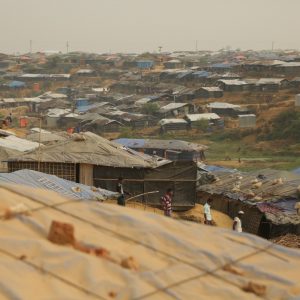Federal Water Tap, November 5: Senators Introduce Water Bill Assistance Legislation
The Rundown
Bipartisan bill would establish pilot programs to help poor families pay water and sewer bills. The EPA selects 39 water infrastructure projects to apply for $5 billion in federal loans. NOAA assesses the 2018 Lake Erie algal bloom, which was milder than forecasted. FERC asks California officials for more analysis of Oroville Dam flood control. Congressional Research Service publishes a report on legislation affecting the Central Valley Project. And lastly, the Energy Department announces a “grand challenge” for water.
“Economic development requires basic infrastructure, including clean drinking water and wastewater services. Our bill would encourage utilities to improve the affordability of their services.” — Sen. Roger Wicker (R-MS) speaking about his water and sewer bill assistance legislation.
By the Numbers
39: Water infrastructure projects selected to apply for $5 billion in federal WIFIA loans. The projects range from a 29-million-gallon tunnel to hold sewage and stormwater in Seattle to a 70-mile water pipeline for Enid, Oklahoma. Twelve of the projects are in California and five are in Florida. (U.S. Environmental Protection Agency)
News Briefs
Water Bill Aid Proposal
A bipartisan bill was introduced in the Senate to help poor families pay water and sewer bills.
The Low-Income Water Assistance Programs Act authorizes the U.S. Environmental Protection Agency to develop dual pilot programs — for water bill and sewer bill assistance. The program, to be implemented by water utilities and funded by federal grants, could encompass a mix of strategies, including lifeline rates, direct payments, water bill discounts, income-based rates, or paying for leak repairs and water-efficient fixtures.
The bill sets a number of criteria for residents to qualify for the program, one of which is household income 150 percent of the state poverty level. At least 32 utilities, serving communities of various sizes, would be selected to participate for the water program, and an equal number selected for the sewer program.
Priority will be given to communities with consent decrees to fix failing systems — agreements that often cost hundreds of millions or billions of dollars and cause water and sewer bills in those communities to soar.
No funding authorization is included in the bill, which is sponsored by Ben Cardin (D-MD) and Roger Wicker (R-MS).
Past attempts in Congress at water bill affordability have not succeeded.
In context: Water Bill Assistance for the Poor Hindered by State Laws
FERC Drilling Guidance
Energy regulators published a draft guidance document to assist pipeline companies planning to drill beneath rivers and wetlands. Company plans need to include how to respond to spills and manage drilling fluid.
The document is not proposing new regulations. It is describing what current requirements so that company plans are more consistent and easier to review.
Comments are due December 28. Submit them at FERC’s eComment using docket number AD19-6-000.
Studies and Reports
Lake Erie Algae Assessment
The lake’s annual summer algal bloom was milder than federal and academic scientists had forecasted, according to an initial NOAA review.
The forecast is based on projected phosphorus flows into the lake, which are largely determined by rainfall and fertilizer use. Researchers do not yet know why the forecast was off.
Oroville Dam Oversight
Federal energy regulators asked the California Department of Water Resources for more information about how the state’s tallest dam, whose main spillway broke in February 2017, would perform in the largest flood that is “reasonably possible.”
The October 25 letter from FERC notes that the size of the “maximum probable flood” in the watershed upstream of Oroville Dam increased since the previous estimate, in 2003.
Central Valley Legislation
The Congressional Research Service published a report with background on the Central Valley Project and proposals in Congress that affect one of the world’s largest irrigation and water delivery systems.
The House Interior and Environment appropriations bill includes policy riders that could hamstring legal challenges to a plan to build water supply tunnels through the Sacramento-San Joaquin Delta and obstruct a state goal of releasing more water into the delta from the San Joaquin River and its tributaries.
On the Radar
Energy Department’s Water Challenge
Prize competitions being a trendy tool for the federal government, the Energy Department announced a “grand challenge” for water.
That challenge, which will be addressed through competitions similar to the X Prize, has five goals, all of which connect water use and energy:
– Cheaper desalination technology
– Reuse of oilfield wastewater
– Thermoelectric plants that require less water and kill fewer fish
– Turn municipal wastewater into a resource
– Small water-energy systems for disaster response
Federal Water Tap is a weekly digest spotting trends in U.S. government water policy. To get more water news, follow Circle of Blue on Twitter and sign up for our newsletter.
Brett writes about agriculture, energy, infrastructure, and the politics and economics of water in the United States. He also writes the Federal Water Tap, Circle of Blue’s weekly digest of U.S. government water news. He is the winner of two Society of Environmental Journalists reporting awards, one of the top honors in American environmental journalism: first place for explanatory reporting for a series on septic system pollution in the United States(2016) and third place for beat reporting in a small market (2014). He received the Sierra Club’s Distinguished Service Award in 2018. Brett lives in Seattle, where he hikes the mountains and bakes pies. Contact Brett Walton







Leave a Reply
Want to join the discussion?Feel free to contribute!